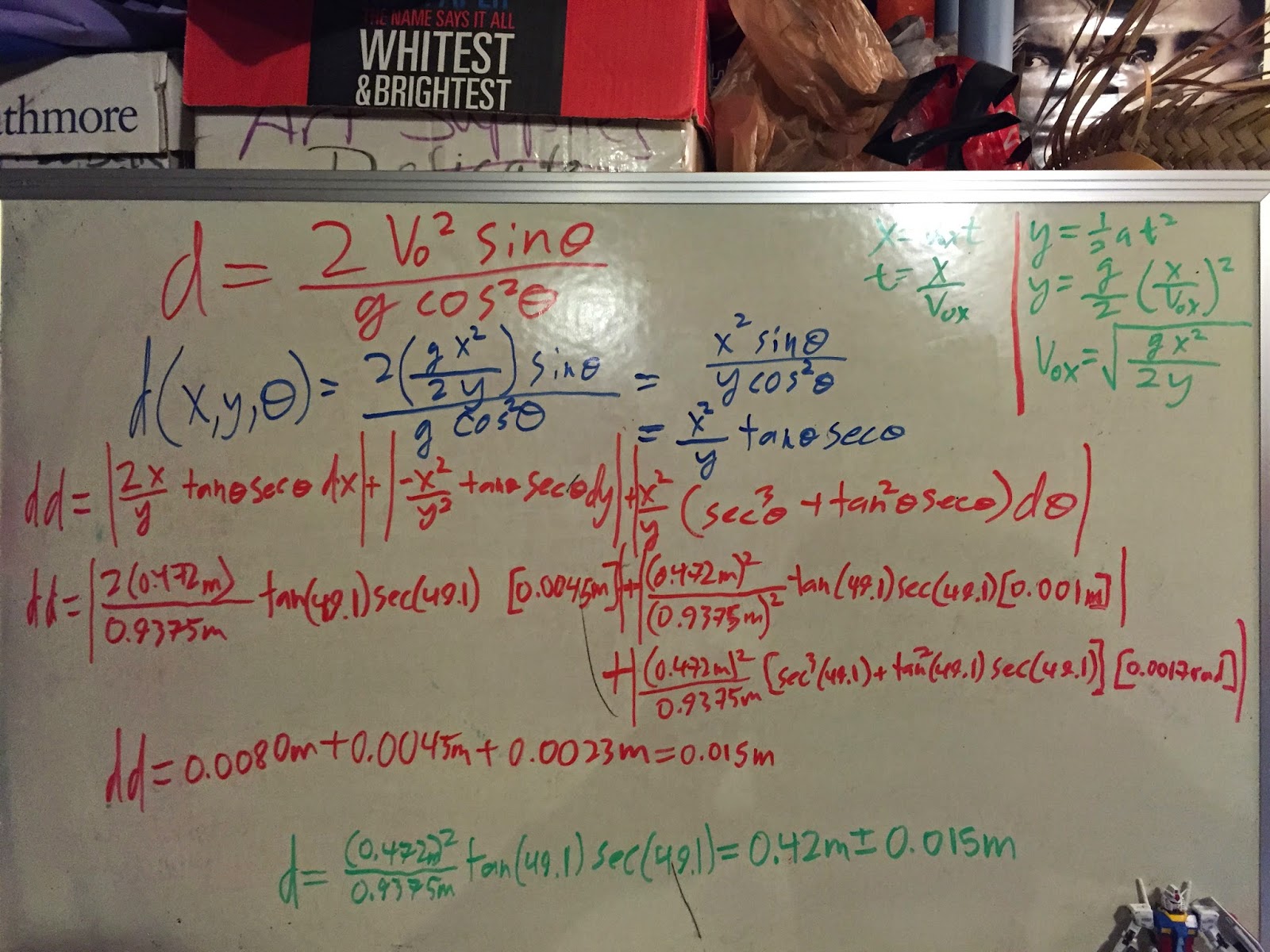First, we created a setup that would allow us to launch an object totally under the influence of gravity so that we don't have to touch it and mess up its motion. We used two aluminum channels, a steel ball, a board, ring stand, clamp, paper and carbon paper (setup below).
After we created our setup, we did a trial run to see where the ball would fall and placed our paper, with a sheet of carbon paper sandwiched between, where it landed on the floor.
After that we launched the ball five times and where the ball landed on the paper, the carbon paper left a mark. We measured the distance where the ball left the track to where it landed on the paper on the floor and the distance the ball fell. It turns out the distance the ball traveled in the x-direction was 0.472m with 0.0035m of uncertainty from the spread of measurement values in addition to 0.001m of uncertainty in taking measurements for a total of 0.0045m. From measuring the distance the ball fell, we got 0.9375m with 0.001m of uncertainty from taking measurements.
We were then asked to determine the speed at which the ball launched from our setup using the measurements we took (calculation below).
We were next asked to calculate uncertainty for the experiment (calculation below).
Interestingly, after calculating for d with the formula in terms of x, y and theta the number rounds up to 0.42m (0.41899m). I believe this comes from my rounding of the value for the initial velocity coming off the ramp. I will be comparing my experimental value of d against my theoretical value for d with respect to x, y and theta. Our calculated value of 0.42m was 1.87% below our experimental value of 0.428m. Our error for this experiment may have come from our taking measurements of each individual trial and from the rounding of values used in calculations.




No comments:
Post a Comment